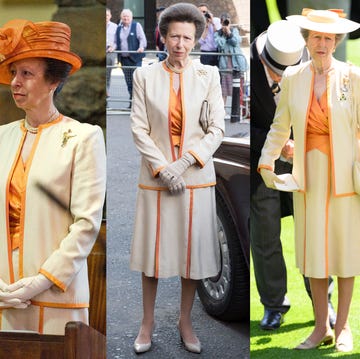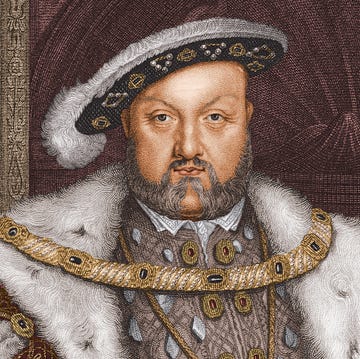The fates of King Louis XVI and Marie Antoinette during the French Revolution are widely known. What happened to their children is another story.
Only two of the French royals’ four children outlived their parents: eldest-born Marie-Thérèse and their second son, Louis-Charles. The children were arrested alongside their parents, who were deposed and soon executed. For Louis-Charles, this marked the beginning of the end of his chance at holding power, but Marie-Thérèse would later ascend to the throne—but only for about 20 minutes.
Marie-Thérèse was the only family member to survive the French Revolution
Born Marie-Thérèse-Charlotte in December 1778, the French princess was 13 years old when she and her family were arrested in September 1792. Louis XVI was immediately separated from his family, though Marie Antoinette was briefly able to stay with her children. The following year, both the French king and queen were killed by revolutionaries who sought to different future for their nation.
Louis-Charles was isolated as his parents had been. Locked in a dark, fetid chamber, he was fed meager rations and physically abused by his jailers. He began to display signs of emotional instability due to the mistreatment. His health further eroded, and the 10-year-old died in June 1795, likely from tuberculosis.
Meanwhile, Marie-Thérèse remained in prison, with little information about her family’s fate, until just before her 17th birthday that December. Released after the end of the Reign of Terror, she was initially sent to her mother’s native Austria.
She briefly became the Queen of France in 1830
In 1799, at the insistence of her uncle (who had styled himself Louis XVIII after Louis-Charles’ death), she married her first cousin Louis, Duke of Angoulême. It was an unhappy marriage, which was never consummated. The couple spent several years in exile in Great Britain, before returning to France in 1814, when Louis XVIII became king following the abdication of Napoleon Bonaparte, in what became known as the Bourbon Restoration.
The tragedies of her life, unsurprisingly, left Marie-Thérèse a suspicious, somewhat embittered woman. She was forced to flee France on several occasions, as the restored Bourbon monarchy’s hold became increasingly tenuous. In 1824, following Louis XVIII’s death, her father-in-law became the monarch as Charles X, and her husband became heir to the throne.
Six years later, during the 1830 Revolution, her husband briefly became King Louis XIX when his father abdicated. Like her mother before her, Marie-Thérèse became queen. That is until her husband, in turn, abdicated less than half an hour later, in favor of his nephew.
Marie-Thérèse spent the rest of her life in exile, bouncing between royal courts. She died at age 72 in October 1851 and was buried next to her husband in what is now Slovenia.

Barbara Maranzani is a New York–based writer and producer. She is a frequent contributor to HISTORY and Biography.com, covering American and European history, politics, pop culture, and more. In her free time, she enjoys planning and plotting her next travel adventure.
Adrienne directs the daily news operation and content production for Biography.com. She joined the staff in October 2022 and most recently worked as an editor for Popular Mechanics, Runner’s World, and Bicycling. Adrienne has served as editor-in-chief of two regional print magazines, and her work has won several awards, including the Best Explanatory Journalism award from the Alliance of Area Business Publishers. Her current working theory is that people are the point of life, and she’s fascinated by everyone who (and every system that) creates our societal norms. When she’s not behind the news desk, find her hiking, working on her latest cocktail project, or eating mint chocolate chip ice cream.














